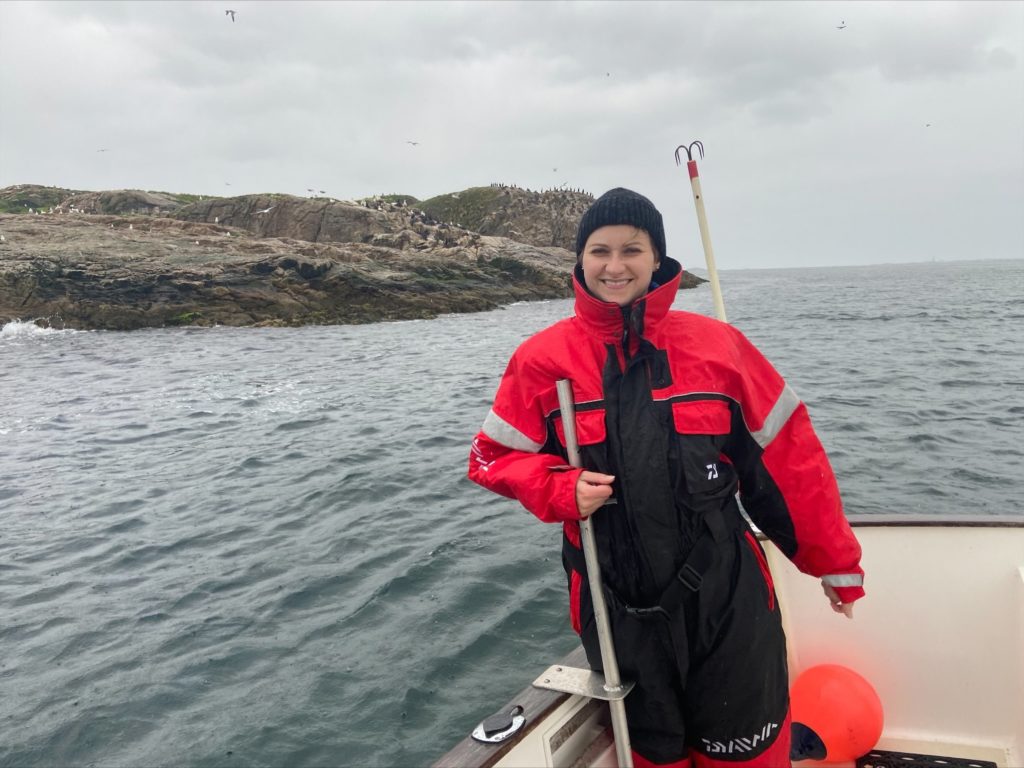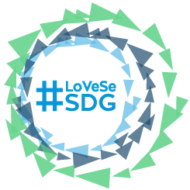By: E. Zoe Walker
A PhD is a significant challenge for anyone, but even more so when working with a large array of stakeholders during a global pandemic that completely limits your ability to visit your case study or meet with people face-to-face. LoVeSeSDGs PhD Candidate, Jessica Fuller has embraced the challenge head-on and used the opportunity to refine her methods and develop strong community ties.

The main aims of her research are to describe the social-ecological system of Andøya (as a case study for Norwegian communities) and to understand the local cultures of decision-making and their relationships with nature. A significant part of localizing the SDGs is figuring out what the community needs/wants and working with a wide array of stakeholders to build a plan from the ground up. Much like renovating a room in your house the first step is to understand what is already there and how it works together.
In order to understand the cultures of the community, Jessica is using a ‘Q-sort’ methodology. She asks stakeholders qualitative questions about their opinions and experiences and translates these answers into quantitative values. This method has been used since the 1930s but is relatively new in the context of sustainability work. Participants from different sectors (e.g., fisheries, aquaculture, tourism, technology, and government) are asked to sort qualitative statements into a ranking from Agree to Disagree, and by comparing each of these “sortings”, similarities and differences are revealed in how the participants perceive issues. This can then inform discussion-centered dialogue and potentially chart a path forward for inclusive and multi-sector problem-solving. Originally, her in-person Q-sort interviews were planned for 2020, however complete mobility restrictions inside Norway due to the pandemic put a full stop to the idea of fieldwork. Jess was able to harness this delay as an opportunity to do pre-sort interviews to get a robust sense of the existing knowledge about SDGs. This provided an opportunity to build a solid foundation, explain the project to participants, and really anchor her work in the local setting. Ultimately Jess has been thankful for the opportunity to first focus on the description and understanding of Andøya.
She’s currently working on transcribing around 20 hours of interviews collected on her month-long stay in Andøya and then will find common themes through analysis. Results are yet unknown, but Jess shared that her preliminary findings are showing that there is more common ground for discussion between the different sectors in Andøya than expected. Ultimately, she believes that everyone in Andøya wants the same thing (a healthy and sustainable community). The sectors are on similar, but parallel paths towards sustainability, and these paths need to merge to find the common ground, which she hopes will facilitate inter-sectoral cooperation and collaboration for sustainability. In the end, Jessica hopes to understand how the SDGs translate from a global to national to local level. The government of Norway has been speaking loudly about their commitment to the SDGs, however, there appears to be little, or uncoordinated, support or guidance for communities and businesses. The SDG targets and indicators are designed to measure the progress of countries but many of them are not relevant on a local scale. For example, part of SDG 14 – Life Below Water is target 14.2:
“By 2020, sustainably manage and protect marine and coastal ecosystems to avoid significant adverse impacts, including by strengthening their resilience, and take action for their restoration in order to achieve healthy and productive oceans”
Many stakeholders have marked this as important, however, progress on this is indicated by the “Number of countries using ecosystem-based approaches to managing marine areas” which is not usable for local actors. So, though SDGs form the foundation of Jess’ work with sustainability in Andøya, in many instances it’s becoming clear that other indicators and pathways are needed to support localization of the large-scale vision of the SDGs.
We’ll have to wait a little longer for more concrete results, but Jess is hoping that the final output of her PhD – in partnership with the whole LoVeSeSDG team – will be a framework of localization for the SDGs that can be adapted to help other communities in Norway determine their own pathways to sustainability.
The LoVeSeSDG Consortium wishes her the best of luck with the next phase of her research!
